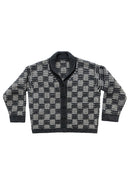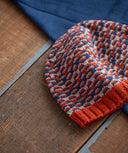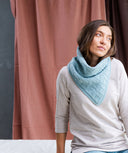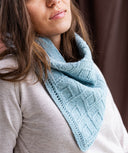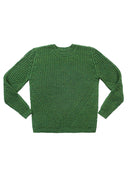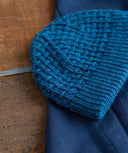How To Knit: Rib Cabled Cast On
Shown in English and Continental Styles
The 1x1 Rib Cabled Cast On provides a sturdy, elastic edge for ribbed hats, mittens, socks, sweater hems and sleeve cuffs.
Simpler to work than a tubular cast on, the 1x1 Rib Cabled Cast On is a great choice for any ribbed edge – the alternating knit and purl stitches of this cast on blend smoothly into your ribbing, giving a more polished appearance than a standard long-tail cast on.
Written Steps
If you hold your working yarn Continental-style (in the left hand), be sure to bring the yarn around to the front for a purl stitch or around to the back for a knit stitch after placing the new stitch on the left needle and before inserting the right needle between stitches to make the next stitch.
Beginning with a Knit Stitch
Step 1: Make a slip knot on the L needle to begin.
Step 2: Insert R needle purlwise into slip knot and purl a new stitch. Place the new stitch on L needle.
Step 3: *Insert R needle from the front between the first and second stitch on the L needle, wrap strand of yarn around R needle as you would for a knit stitch and pull through, place this new loop onto L needle, insert R needle from behind the L needle between the first and second stitch on the L needle, wrap strand of yarn around R needle as you would for a purl stitch and pull through, place this new loop onto L needle; repeat from * until the required number of stitches have been cast on, ending with a knit stitch if casting on an odd number of stitches.
Step 4: After last stitch has been cast on: If last stitch cast on was a knit stitch, slip last stitch purlwise to R needle, bring working yarn to front between needles, return last stitch to L needle and pull working yarn snugly. If the last stitch cast on was a purl stitch, slip the last stitch purlwise to R needle, bring working yarn to the back between needles, return last stitch to L needle and pull working yarn snugly. Repositioning the working yarn in this way creates a cleaner edge at the end of your cast-on row.
If using this method to cast on stitches to a piece in progress, omit the slipknot and begin at *
Beginning with a Purl Stitch
Step 1: Make a slip knot on the L needle to begin.
Step 2: Insert R needle knitwise into slip knot and knit a new stitch. Place the new stitch on the L needle.
Step 3: *Insert R needle from behind the L needle between the first and second stitch on the L needle, wrap strand of yarn around R needle as you would for a purl stitch and pull through, place this new loop onto L needle, insert R needle from the front between the first and second stitch on the L needle, wrap strand of yarn around R needle as you would for a knit stitch and pull through, place this new loop onto L needle; repeat from * until the required number of stitches have been cast on, ending with a purl stitch if casting on an odd number of stitches.
Step 4: After last stitch has been cast on: If last stitch cast on was a knit stitch, slip last stitch purlwise to R needle, bring working yarn to front between needles, return last stitch to L needle and pull working yarn snugly. If the last stitch cast on was a purl stitch, slip the last stitch purlwise to R needle, bring working yarn to the back between needles, return last stitch to L needle and pull working yarn snugly. Repositioning the working yarn in this way creates a cleaner edge at the end of your cast-on row.
If using this method to cast on stitches to a piece in progress, omit the slipknot and begin at *.
